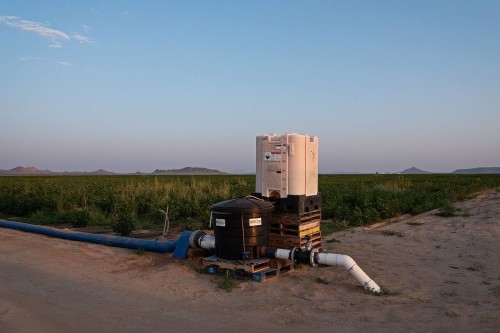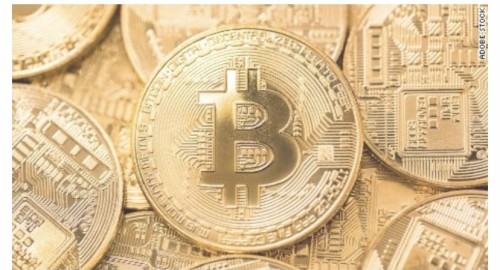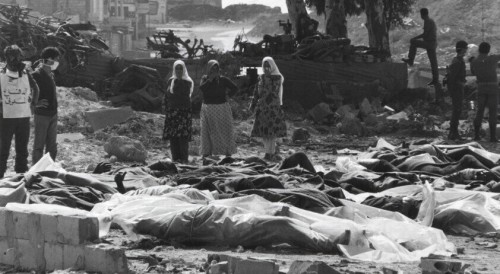According to the Department of Water and Forests under the Ministry of Agriculture, the efforts made to fight forest fires have limited wildfire damage in Morocco in 2021, as compared to last year and to what the country experienced ten years ago (2011 -2020).
The land of burnt forests declined significantly by 47% and 11% in 2021 compared to last year and to the 10-year average during the same period, respectively.
However, a total of 2,782 hectares of forests was affected by 285 fires from January to September 2021.
“34% of this area consists mainly of secondary species and herbaceous formations,” said the department in a press release.
In 2021 alone, the Rif region in northern Morocco, which was hit by 81 wildfires spanning an area of over 1,482 hectares, remains one of the major wildfires experienced by the country. The second region is Fez-Boulemane with 17 fires and 859 hectares of burned land.
The biggest wildfire in the Rif region was registered in the forest of Jbel Sougna in the province of Chefchaouen and covered a land of 1,100 hectares, while damage estimations of fire outbreaks in the province of Sefrou, in Laanaceur (Dayat Iffer) and in Ighezrane (Ribate Al Kheir) reached 470 and 350 hectares respectively.
Meanwhile, wildfires tend to affect forests containing plant species such as the cork oak, an aleppo pine, and holm oak trees.
The press release also reported that the reconstruction programs of burnt forests have been launched across the country, which includes the Zemzem forest in the northern city M’diq that had been burnt down last year.
Zemzem forest is currently under rehabilitation with a budget of MAD 15.5 million ($1.6 million) aimed at improving the ecosystems that have been damaged.
The report explained that the aforementioned budget will be invested in the reforestation of 485 hectares of land, the regeneration and cleaning of 515 hectares of land, the opening and the maintenance of trackers over 17 km as well as the maintenance of firewalls of 20 km.
source: moroccoworldnews
Noni juice is a beverage made from the fruit of a tropical tree. The tree grows naturally in areas of Southeast Asia, where the fruit and juice are part of traditional medicine.
The fruit contains potent antioxidants that may provide some health benefits for the body, such as supporting a healthy immune system and relieving inflammation.
Noni is mainly marketed as a juice or juice blend.
The decision is driven by what France perceives as the refusal from the three countries to facilitate the return of its citizens living in France irregularly.
Gabriel Attal, the spokesman in the French government, discussed the French government's position on reducing visas for citizens from the three North African countries with French media outlet Europe1 radio.
“We had a dialog with certain Maghreb countries, then came the threats,” Attal said today, September 28.
He said that his country is “carrying out these threats.”
France intends to cut by 50% the number of visas issued to Moroccan and Algerian citizens. Meanwhile, Macron’s department will reduce the number of visas issued to Tunisians by 30%.
Recent data compiled by Schengen Visa Info indicate that Moroccan travelers recieved the most French-issued Schengen visas in 2020.
The website said that travelers from Morocco secured 98,627 Schengen visas in the past year, followed by Russians (78,701), Algerians (73,276), and Chinese travelers (71,451).
France’s threats came after Morocco confirmed its commitment to help facilitate the return of migrants in an irregular status in European countries.
In June, King Mohammed VI ordered the government to address the issue of unaccompanied minors entering Europe.
The monarch “repeatedly stressed” Morocco’s firm commitment to accept the return of identified unaccompanied minors, a statement from Morocco’s Ministry of Foreign Affairs said in June.
The statement cited the establishment of cooperation mechanisms to enable migrants to return home, particularly France and Spain.
The Moroccan ministry pointed out that implementation of the cooperation has been delayed primarily due to “blockages” caused by complex procedures in certain countries.
Morocco also urged the EU and European countries to facilitate the operation.
Source: Morocco world news
Facebook is putting a hold on the development of a kids' version of Instagram, geared toward children under 13, to address concerns that have been raised about the vulnerability of younger users.
"I still firmly believe that it's a good thing to build a version of Instagram that's designed to be safe for tweens, but we want to take the time to talk to parents and researchers and safety experts and get to more consensus about how to move forward," said Adam Mosseri, the head of Instagram, in an interview Monday on NBC's "Today" show.
Yet the development of Instagram for a younger audience was met with broader opposition almost immediately.
Facebook announced the development of an Instagram Kids app in March, saying at the time that it was "exploring a parent-controlled experience." Two months later, a bipartisan group of 44 attorneys general wrote to Facebook CEO Mark Zuckerberg, urging him to abandon the project, citing the well being of children.
They cited increased cyberbullying, possible vulnerability to online predators, and what they called Facebook's "checkered record" in protecting children on its platforms. Facebook faced similar criticism in 2017 when it launched the Messenger Kids app, touted as a way for children to chat with family members and friends approved by parents.
Josh Golin, executive director of children's digital advocacy group Fairplay, urged the company Monday to permanently pull the plug on the app. So did a group of Democratic members of Congress.
"Facebook is heeding our calls to stop plowing ahead with plans to launch a version of Instagram for kids," tweeted Massachusetts Sen. Ed Markey. "But a `pause' is insufficient. Facebook must completely abandon this project."
The Senate had already planned a hearing Thursday with Facebook's global safety head, Antigone Davis, to address what the company knows about how Instagram affects the mental health of younger users.
Mosseri maintained Monday that the company believes it's better for children under 13 to have a specific platform for age-appropriate content, and that other companies like TikTok and YouTube have app versions for that age group.
He said in a blog post that it's better to have a version of Instagram where parents can supervise and control their experience rather than relying on the company's ability to verify if kids are old enough to use the app.
Mosseri said that Instagram for kids is meant for those between the ages of 10 and 12, not younger. It will require parental permission to join, be ad free, and will include age-appropriate content and features. Parents will be able to supervise the time their children spend on the app, oversee who can message them, who can follow them and who they can follow.
While work is being paused on Instagram Kids, the company will be expanding opt-in parental supervision tools to teen accounts of those 13 and older. More details on these tools will be disclosed in the coming months, Mosseri said.
source: CTV news
People aged 60 and over will get a third COVID-19 vaccine dose to boost their immunity against the virus, Saudi Arabia’s Health Ministry announced Sunday.
“We are currently preparing to include older adults in the booster dose plan, which will be provided after they complete eight months since they received their second dose of the vaccine,” ministry spokesman Dr. Mohammed Al-Abd Al-Aly told a press briefing.
The ministry previously said it had started giving booster shots to high-risk individuals, including those with chronic kidney failure and people with organ transplants.
Over 41 million COVID-19 vaccine doses have been administered since the Kingdom’s immunization campaign started. Nearly 18.3 million people have been fully vaccinated.
People aged 60 and over will get a third COVID-19 vaccine dose to boost their immunity against the virus, Saudi Arabia’s Health Ministry announced Sunday.
“We are currently preparing to include older adults in the booster dose plan, which will be provided after they complete eight months since they received their second dose of the vaccine,” ministry spokesman Dr. Mohammed Al-Abd Al-Aly told a press briefing.
The ministry previously said it had started giving booster shots to high-risk individuals, including those with chronic kidney failure and people with organ transplants.
Over 41 million COVID-19 vaccine doses have been administered since the Kingdom’s immunization campaign started. Nearly 18.3 million people have been fully vaccinated.
“We urge everyone to complete both doses at the earliest,” said the spokesman. “Vaccination is the most important factor that will help us through the coming phase in confronting the pandemic which is, hopefully, the final stage with the virus.”
Saudi Arabia confirmed five new COVID-19 related deaths on Sunday, raising the total number of fatalities to 8,699.
The Ministry of Health confirmed 44 new cases reported in the Kingdom in the previous 24 hours, meaning 546,926 people have now contracted the disease. Of the total number of cases, 244 remain in critical condition.
According to the ministry, the highest number of cases were recorded in the capital Riyadh with 11, followed by Jeddah with seven, Madinah recorded three, and Makkah and Najran confirmed two cases each.
The health ministry also announced that 58 patients had recovered from COVID-19, bringing the total number of recoveries in the Kingdom to 535,950.
Saudi authorities continued their monitoring campaigns to ensure compliance with the precautionary measures imposed to stem the spread of the disease.
They recorded 19,870 violations of the regulations in one week, according to recent statistics from the Ministry of Interior.
The statistics indicated that the region of Riyadh recorded the highest number with 8,682 violations, followed by the Eastern Province (2,007), Makkah (1,931), Madinah (1,852), Qassim (1,540), Jouf (1,130), Hail (1,021), Jazan (391), the Northern Borders (361), Baha (355), Tabuk (292), Asir (224), and Najran (84).
The ministry called on citizens and residents to abide by the preventive protocols and the instructions issued by authorities in this regard.
Saudi municipalities have also ramped up efforts to monitor compliance with health and safety measures.
The municipality of the Eastern Province carried out 9,253 inspection tours of commercial centers and facilities in one week, identifying 493 violations.
Field teams closed 14 commercial outlets for breaching protocols.
The municipality of Hail also carried out 1,191 inspection tours of commercial centers and facilities in one day. The authorities closed 56 commercial outlets for breaching protocols.
Municipalities urged all commercial facilities to abide by regulations to ensure public safety and prevent the spread of the disease.
Officials have also called on the public to report any suspected health breaches by phoning the 940 call center number or contacting authorities through the Balady app.
Meanwhile, a spokesperson for the Human Resources and Social Development Ministry said that 87,500 monitoring tours had been carried out across the public and private sectors during the past month to ensure compliance with COVID-19 measures.
There were 3,509 violations recorded, 1,948 against private sector institutions and 1,561 against people working in the private sector.
Ministry spokesperson Saad Al-Hammad said 3,784 reports of potential violations were received during the past month, adding that the ministry accepted reports through its app, hotline number 19911, and social media accounts.
Currently, 88 percent of public sector and 85 percent of private sector employees have received both vaccine doses.
“These numbers indicate an increased awareness among the public of the need for health safety in the community to confront the pandemic,” Al-Hammad said.
Source: Arabnews.com
Gazing out from the rocky ledge of Sleeping Beauty's castle in central Germany, the countryside below stretches out in a patchwork of light and dark green forests before stopping dead.
Germany's climate election
A Grimm story
On the bone-dry western flank of Arizona, where the Colorado River Basin meets the Mojave Desert, sit 11,000 acres of alfalfa, sorghum, wheat, and Sudan grass belonging to the Colorado River Indian Tribes (CRIT), all destined to be harvested and sold for animal feed. For anything to grow here, irrigation is a must. Less than a quarter inch of rain has fallen so far this year, according to Josh Moore, who manages the farm on behalf of his tribe.
“The reservation is set up on a pretty outdated flood irrigation system,” Moore says. A network of canals built in the 19th century delivers water from the Colorado River, a system that seemed like a better idea before the watershed entered a persistent and increasingly dire state of drought. Although the canals supply enough water to meet CRIT’s farming needs for now, the tribes are planning for a hotter, drier future. This season, black plastic tubing can be seen snaking down hundreds of rows of sorghum: an experiment with microdrip irrigation that could radically reduce the farm’s withdrawals from an overtaxed watershed.
Around the world, most crops depend on rain alone for their water, but in places where rainfall isn’t sufficient, we’re forced to irrigate. Despite all the innovation that’s made its way into agriculture in recent years, from GPS-guided tractors to genetically engineered seedlings, 85% of all irrigation is still done by releasing vast quantities of water across the surface of a field, pretty much the same way it was handled 4,000 years ago in Mesopotamia.
Flood irrigation has hung on because it’s cash-cheap, but from a natural-resource perspective, it’s staggeringly expensive. As much as 70% of the water goes to waste, and overwatered crops can fail to reach their full potential. Excess fertilizer is carried away by the runoff, contaminating streams, wetlands, and lakes.
Microdrip irrigation was supposed to solve all that. In the 1930s, a young engineer named Simcha Blass noticed a tree that had grown much taller than the others in the same row; when he looked closer, he found that its roots were being fed by a tiny leak from a nearby irrigation pipe. Years later, the Israeli used the concept to create a plastic drip irrigation system that went on to be sold under the brand name Netafim. It remains the global leader in its sector.
Today, there are hundreds of drip irrigation companies, but the technology is being applied to less than 5% of irrigated acres globally, usually to big-ticket crops such as almonds, wine grapes, and tomatoes. The limiting factor is cost. As the systems are currently designed, pushing water through hundreds of feet of pipe requires a lot of force, which farmers supply with pumps; electric ones if they have power in their fields, carbon-belching diesel versions if they don’t. The dripper lines are also prone to getting clogged by silt particles or algae found in natural water, so it must be filtered, which adds another expense. The whole setup amounts to at least $2,000 an acre, plus energy bills. For lower-value crops such as cotton or alfalfa, drip irrigation simply doesn’t pay.
The microdrip setup being used by CRIT Farms, however, cost less than $400 an acre to install, and the required pressure is supplied entirely by gravity, which has the advantage of being free and carbon-neutral. To the casual observer, the system doesn’t look like much. But to Moore, the idea of drip irrigating crops for animal feed is nothing short of revolutionary. Assuming, of course, that it actually works.
“When the well’s dry, we know the worth of water,” Benjamin Franklin wrote in a 1746 edition of Poor Richard’s Almanack. He didn’t know the half of it. Today’s global population is 10 times what it was back then, and freshwater sources are in decline. The biggest water hog by far is agriculture, which accounts for almost three-quarters of global use.
Signs of water scarcity are all around us, growing more alarming with each passing year. In August, for the first time in history, the Colorado River was declared by the U.S. government to be in a state of shortage, triggering supply cuts to some of the 40 million people who depend on it. Five million of them get their water courtesy of the Central Arizona Project (CAP), a public utility that delivers river water by canal from the western edge of Arizona to 80% of the state’s population.
Chuck Cullom, the Colorado River programs manager at CAP, has spent the past decade exploring options for increasing Arizona’s water supply, including wastewater-treatment technologies and gadgets that help urban customers curb their use. In 2019, at a conference in Tel Aviv, Cullom met an executive from an Israeli irrigation startup called N-Drip, which was developing a system that promised drastic water savings without the prohibitive costs. “I was superskeptical,” Cullom says. “It sounded like a unicorn solution.”
But agriculture accounts for the vast majority of Arizona’s freshwater use, so Cullom was willing to try N-Drip. In 2020, CAP provided the system to CRIT Farms for use on 40 acres of sorghum. They found that it cut water use in half, while slightly improving the quality of the crops: a staggering result, albeit on a very small scale. This year, CAP expanded the pilot to about 200 acres of sorghum and cotton across Arizona, and, if all goes well, hopes to deploy the system regionally by 2023, continuing to cover the cost of the equipment for farmers who install it.
N-Drip is the brainchild of Uri Shani, a professor of soil physics at the Hebrew University of Jerusalem and a former chairman of Israel’s water authority. He set out seven years ago to devise a microdrip irrigation system cheap enough to make sense not just for lettuces and berries but also commodity crops such as soy and corn, which make up the bulk of the world’s agricultural output.
Shani is 72 years old, with short salt-and-pepper hair, wire-rimmed glasses, and an avuncular manner. He was born in 1950, on a kibbutz suffused with an angst peculiar to life in an arid country committed to agricultural self-sufficiency. “My father was an engineer who worked primarily on water. I grew up thinking about water and water solutions all my life,” Shani says, speaking by Zoom from N-Drip’s office in Tel Aviv.
After completing his military service with an elite commando unit, Shani went on to Hebrew University, Israel’s preeminent research institution, and got a master’s degree in soil physics. For his Ph.D. work, he moved to Kibbutz Yotvata, in the desert in Israel’s far south. The area gets less than an inch of rain each year and has only brackish groundwater for irrigation purposes: the outer limits of agriculture. He began there as a grad student and ended up managing the kibbutz.
A private citizen once again, Shani began ruminating on the growing threat of water shortages worldwide. More than a quarter of the world’s population lives in water-stressed countries, and the United Nations estimates that water scarcity could displace 700 million people by the end of the decade. The most significant contribution he could make, he decided, would be to help drip irrigation go mainstream. That meant inventing a system that ran without filters and pumps.
To understand Shani’s challenge, you first must understand what’s happening inside those humble black plastic dripper lines. Along each one is a series of holes, and fastened inside every hole is a plastic widget about the size of a Tic Tac, called an emitter. Water moves through an exceedingly narrow, maze-like channel inside the emitter, regulated so it comes out in measured droplets. The resistance produced by those emitters is the reason so much pressure is required to move water from one end of a field to the other in a traditional system.
Shani conceived a new kind of emitter, one that offered so little resistance that the water pressure provided by gravity alone—accrued during the 1- to 2-foot descent from the irrigation canal to the field below—would be enough to propel the water all the way down hundreds of feet of tubing and out into the ground. First, he experimented with weaving plastic and metal fibers into various three-dimensional lattice structures. But it was on a hike one day, he says, that the breakthrough came: Instead of a zigzag channel, his emitter would consist of a rod suspended inside a cylinder, with water flowing through the tube shape formed between them. Unlike with a traditional emitter, now, no single particle of debris could block the water’s flow. “Boom,” Shani says. “I was absolutely convinced it would work. Then we developed all the mathematics.”
Once he fine-tuned the concept, Shani needed to commercialize it. He contacted Eran Pollak, a former finance ministry official with whom he’d worked closely as water chairman, and told Pollak he’d invented drip irrigation that used only gravity. Pollak was skeptical. He’d grown up on a kibbutz, too, and he knew about irrigation; there was no such thing as zero-pressure drip.
To date, N-Drip has raised $25 million in funding, and its system is being used by hundreds of farmers for 4,000 acres’ worth of crops, ranging from cotton to potatoes to soybeans. But Shani has a long way to go if he intends to convert the Earth’s 600 million flood-irrigated acres, and the road from garden shed to global irrigation solution will have plenty of obstacles.
Because N-Drip doesn’t use filtration, most of the hiccups thus far have had to do with all the unexpected things one might find in water on a farm. Early in one trial, a California grower contacted N-Drip in a panic to say that his system had stopped functioning. When Shani arrived, he found a fish the size of his index finger clogging one of the pipes. A clump of green algae did something similar on a farm in Kazakhstan. Now, N-Drip’s water tanks are outfitted with mesh netting to capture all manner of plant and animal life.
In the baking sun of Arizona, in a region with particularly mineral-rich water, the dripper lines got so hot that calcium carbonate precipitated out, coating the emitters in limescale like the inside of a British teakettle. That led N-Drip to develop protocols for burying its lines in a thin coating of soil to keep them cool and for using softeners on hard water.
David Midmore, a professor emeritus of plant sciences at Australia’s Central Queensland University and an expert on microdrip irrigation, says that if N-Drip truly plans to reach the world’s 500 million small-scale farmers, and not just large, sophisticated growers, success depends not only on designing the right technology but also on investing substantially in education and support. “It’s very important that the growers be taught the correct ways to drip-irrigate, to have simple measures of water in the soil, and how not to over- or under-irrigate,” he says. “It’s not only training, but follow-up.”
N-Drip insists that small farms are a crucial part of its mission. “If a rich farmer in Australia increases yield by 47%, that’s great, pop open the Champagne, take a fancier vacation that year,” says Siegel, the company’s chief sustainability officer. “But if a subsistence farmer increases yield, and they have more food to eat and more food to sell, it transforms that family and that community.”
To that end, as the Covid-19 pandemic unfolded in 2020, putting lucrative projects in the U.S. and Australia on hold, N-Drip pivoted to manufacturing a 1-acre kit designed for these users. This DIY system arrives with a link to a YouTube video and simple, Ikea-esque line drawings to guide the farmer through installation.
N-Drip has also developed a proprietary soil sensor, called N-Drip Connect, that monitors plant and soil conditions and sends farmers real-time guidance via a smartphone app on when to irrigate and fertilize. The sensor feeds back to the company’s agronomic team, too, so that it can keep tabs on the field conditions.
Another challenge for N-Drip will continue to be economic. The system can be installed for a fraction of the cost of a conventional pressurized drip system, with none of the ongoing energy costs, but water is free or heavily subsidized for most farmers globally. Although some, such as Australian cotton growers, might be willing to invest to urgently protect a fast-dwindling resource, many of the world’s small farmers would be unable to cover even a modest additional expense.
“The smallholder market is a huge market, and one that can benefit most from our system, but it’s very difficult to do business with if you don’t have a large and well-positioned partner,” Pollak concedes. N-Drip envisions providing its system to these farmers primarily via nonprofits, government agencies, and large corporations making good on sustainability pledges. Its executives say the opportunity, in the near term, can be measured in hundreds of thousands of acres of agricultural land.
An early example of this sort of partnership is with PepsiCo Inc., which contracts directly with 40,000 farmers for ingredients such as corn, oats, and potatoes, and has set a goal of improving agricultural water-use efficiency by 15% by 2025. PepsiCo piloted N-Drip’s technology with a handful of farmers in India, Vietnam, and the U.S., and saw improved crop yields with less fertilizer input and 50% less water consumed versus flood irrigation.
Peter Gleick, the president-emeritus and co-founder of the Pacific Institute, a nonprofit research institute focused on freshwater issues, stresses that when it comes to the future of irrigation, it’s critical that we not lose sight of the big picture. Converting cotton or alfalfa fields to drip irrigation is a step in the right direction, but a larger question looms: Should we really be growing those crops in arid climates to begin with? “We need to have a real conversation about what it makes sense to grow in the water-scarce West, as well as a conversation about growing what we choose to grow more efficiently and more carefully,” he says. “This technology might help with the second question, but it’s not going to help with the first, more political one.”
Gleick notes that it’s one thing to object in principle to using precious drinking water to grow crops for animal feed, and another to tell farmers they should stop cultivating. Back at CRIT Farms, Moore says he’s happy to be contributing to research he sees as vital to agriculture’s future in the region. Next year he plans to use N-Drip’s system on additional acreage. Although the tribes’ reservation hasn’t had its water quota reduced, Moore knows that shortages will come for everyone one day. “We need to start living like we’re affected by those cutoffs to buy us some time,” he says. “To survive as a people, and as a business, we need to be looking at technologies like this.”
source:Bloomberg.com By Elizabeth G Dunn
RIYADH: The Arab coalition intercepted and destroyed a booby-trapped Houthi drone launched toward Saudi Arabia’s southwestern city of Abha on Friday.
The militia’s escalation in attacks is a deliberate attempt to target civilians, the coalition said.
On Thursday, the Iran-backed militia launched five armed drones toward Saudi Arabia as people celebrated the Kingdom’s 91st national day. All the drones were intercepted.
On Wednesday, the Houthis launched three drones toward the southwestern city of Khamis Mushait, all of which were shot down.
source: Arab news
Beijing (CNN Business)China is intensifying its crackdown on cryptocurrencies.
NEW YORK: “Inclusivity” is a buzzword this year at the UN General Assembly as it convenes on the third day of its 76th session. Unless “including” women, children, and the most vulnerable in all aspects of sustainable development, the world’s multi-faceted crises will continue to rage.
Inclusivity is of paramount importance also when it comes to the digital divide in the world between rich nations and developing ones.
UN Secretary-General Antonio Guterres, underscoring the growing importance of the digital economy to humanity’s future, has stressed the need for everyone to be able to work and study online. Lack of such ability will result in further marginalization of the most vulnerable sections of the population: women, the elderly, and people with disabilities.
Guterres’s roadmap calls for every adult to have internet access by 2030.
“Shaping an Inclusive Digital Age,” was the subject of discussion at a high-level event convened by the Digital Cooperation Organization, a recently-established global organization working towards achieving “digital prosperity for all.” DCO works with governments, the private sector, international and non-governmental organizations, and civil society in pushing for an inclusive digital transformation and growth of the digital industries.
The seven-member body includes Saudi Arabia, Bahrain, Jordan, Kuwait, Nigeria, Oman, and Pakistan. It accounts for a population of 480 million, 80 percent of which are under the age of 35. It said it is open to any new member that shares the same goals of “empowering youth, women, and entrepreneurs and leapfrogging the digital transformation.”
Thursday’s event highlighted DCO’s efforts in bringing together all the various stakeholders to “spur digital economic growth across member states, advance DCO members’ digital transformation, and address challenges related to a growing digital divide within and between countries.”
Representing the UN technology envoy office, assistant secretary-general Maria-Francesca Spatolisano encouraged multi-stakeholder cooperation between wealthy and developing countries. She said DCO’s goals can help push forward the UN’s roadmap and are in alignment with the UN Sustainable Development Goals.
In 2015, the UN General Assembly set forth 17 SDGs designed to achieve a better and more sustainable future for all. The SDGs were intended to be achieved by the year 2030.
“I welcome the Digital Cooperation Organization’s efforts to create an inclusive digital future for all, and efforts by member states Bahrain, Jordan, Kuwait, Nigeria, Oman, Pakistan, and Saudi Arabia to prioritize the digital economy in their countries’ agendas,” Spatolisano said.
Saudi Minister of Communications and Information Technology Abdullah Alswaha, a DCO chairperson, underscored the growing polarization resulting from digital exclusion, such as seen in the access to venture capital. Stressing that the COVID-19 pandemic has shown that the digital economy can be a catalyst for growth, he pointed to the 34 percent rate of female digital participation.
Helping shape the international debate around digital transformation, ministers for communication and technology from DCO’s membership, as well as Saudi Arabia’s permanent representative to the UN, Abdullah Al-Mouallimi, shared expert insight on ways to address the key challenge of the digital economy.
“The borderless nature of the internet means that global collaboration is not an abstract idea, but rather a practical reality,” DCO Secretary-General Deemah Al-Yahya said.
“While the digital economy is seeing exponential growth clustered within specific geographies and industries, we need to ensure that the digital divide does not widen as the digital economy progresses.”
She said the DCO has brought together countries representing 480 million people, 270 million of which are under the age of 25, and $2 trillion in combined GDP, in order to focus efforts on digital economic inclusion and bridge the digital divide.
“Our inclusive approach extends to creating impactful partnerships with the private sector to grow the digital economy,” Al-Yahya said. “Our member states comprise 6,300 digital and innovative start-ups and 46 million small and medium enterprises, meaning that public-private partnerships are essential to creating digital prosperity for all of our members.
“The DCO’s vision is aligned with the UN secretary-general’s roadmap for digital cooperation in advancing digital prosperity for all. If we are to ensure that digital technology offers a net benefit to society, we must take a proactive and inclusive approach. We must drive the global digital agenda. We call on every nation who shares these aspirations to join the DCO.”
source: Arab news
I often find myself wondering, “Why must Palestininas struggle wherever we are? Are we cursed?” Forcing us to flee our homes and leave everything behind in 1948 (the year of the Nakba, when Israel was created at our expense) was not enough. Our punishment continued. There are so many examples that could be cited. But in this piece I focus on the one I personally find the most shocking--even for me, a Gazan Palestinian who has lived through three wars. This week is the 38th anniversary of the massacre in Lebanon’s Shatila refugee camp. For those who survived it, It’s a nightmare that still haunts. I share the memories of a few of those survivors below.
Nohad Srour al-Marei grew up in the Shatila refugee camp in southern Beirut. She was 16 years old when she was abruptly awakened in the early morning hours of September 16, 1982.
“A strong knocking on the door woke us. I was so very frightened and clenched my dad,” she recalls, her voice shaking even so many decades later. A couple of her family members rushed to the roof to see who was there and saw a group of armed men, shouting loudly and angrily for Nohad’s family to open the door. When they did, the men rushed in.
What followed was chaos and terror. The armed men, who they later learned were members of the Christian Phalange militia, a right-wing faction allied with Israel. The Israeli army had ordered the militia to clear Shatila and the neighboring town of Sabra of members of the Palestine Liberation Organization. However, they did not discriminate.
Nohad and her family were herded in and out of their home repeatedly, as if to confuse and disorient them. Then they were lined up against the wall. Nohad sensed what would come next: a rain of shots. “We all fell to the ground, trying to pretend we were already dead. I was holding my little sister, Shadia (a year and two months old). She was shot in her head and couldn't bear the pain. She tried to crawl to our mother, moaning ‘Mama, Mama!’” Then Nohad heard another shot and never heard her sister’s voice again.
“I shouldn’t have let her leave my hands,” Nohad says, the regret and pain breaking her voice. Her three brothers and another sister were killed as well, and a bullet pierced Nohad’s elbow.
Nohad recalls hearing the men say to each other, in their native Lebanese accent, “Reshon, reshon!” (shoot them, shoot them!). “I expected the Israelis to attack us, but not our Lebanese brothers.”
There was more to come. Nohad’s father and sister Souad, 17, were injured so badly they could not move, so Nohad and her mother left to find help.
Unfortunately, several Phalangists later returned to look for money and valuables. Seeing the door slightly open to their home, they were angry to discover Nohad and her mom gone. They had thought the two were dead. One of them said, “Harabo, harabo!” (they escaped!”). Hearing Souad groan, they laughed and said they’d teach her a lesson; they’d rape her in front of her father, who had been shot in the chest. They did, and she thinks the shock killed her father. Saying, “May God be with you,” he died.
Souad regained consciousness hours later--still lying in the house, bleeding and surrounded by the dead bodies of her family and neighbors. Help did not arrive for two days, since ambulances were not allowed in.
She survived, but as a paraplegic. Souad now lives in Belgium and joined other survivors to file a lawsuit against Israeli Prime Minister Ariel Sharon in the International Court of Justice. The case is still active.
On their way to Beirut’s Gaza Hospital outside the camp, Nohad said she was surprised to see bluish-black blood oozing from people's bodies as they lay on the ground. She learned later the color meant the blood was old: The massacre had started the night before, but her family was unaware until the morning.
Mahmoud al-Afifi is another eyewitness of the massacre. He was 12 years old at the time and lucky enough to escape the camp with his family. However, on Sunday, September 18, he returned to his home and was greeted by the stench of death. Corpses were strewn everywhere on the streets. Crews from the Red Cross covered the bodies with lime, because the smell was so strong. “The image of a pregnant woman whose belly was slit and her fetus slaughtered before she was killed herself will never leave my mind.” Mahmoud tells me.
Zeinab al-Hajj lives along the border of Shatila. Although she was only 5 years old when the massacre took place, she still has memories. In the early morning of September 15, she was outside with her mom when they saw a group of “strangers” wearing a khaki uniform. Her mom started to talk to them, thinking they were defending the camp against attacks. She told them that all other members of the Palestinian militias had left the camp and asked them to leave as well, so there would be no more trouble. One of them asked her where she lived and Zeinab’s mother pointed to their house. He replied, “Don’t worry, ma’am. We are here to protect you. Just make sure to stay at home. Don’t leave.” They marked a number on their door and left. It wasn’t long before Zeinab and her mother learned that the “strangers” were Phalangists.
Later that day, at around 5:30 p.m., an old man covered with blood ran down their street, shouting, “There’s a massacre, people! Run away, run away now!” Zeinab said not everyone believed him. Some stayed, while others fled, including Zeinab and her mother. The terror of the moment made them forget her infant brother sleeping in his blanket. On their way back to get the boy, others advised them not to return, since as Israeli and Lebanese militias were shooting at anything moving. However, one of their fellow residents offered to help and risked his life to fetch Zeinab’s brother. He managed to bring him to her, but was injured. “It literally felt like the day of judgement. Everyone was escaping to save himself. We heard people screaming, crying and shouting on our way out. Those scary voices still echo in my head.” Zeinab recalled.
The Phalangists killed with machine guns, Kalashnikov rifles, hatchets and knives. Some people were burned alive in their houses. Even Lebenese families who lived at the border of the camp were slaughtered. According to Zeinab, her Lebanese neighbors who sought refuge in her house were killed.
“We asked them to escape with us, but they refused. They said the Israelis were coming to kill only Palestininas,” she said. The militias didn’t know the exact borders of the camp, so they killed anyone in or close to the camp, thinking they were Palestinians. Hundreds of people (mostly women and children) were ordered to stand in front of a wall in some open land next to the camp, then shot all at once. More than 3,000 people were buried in what became a mass grave.
Today, the land is the site of a memorial. “We will never forget how our Arab ‘brothers’ betrayed us, while the Israelis blockaded the whole camp with their tanks and threw flare bombs to help the Phalangists see clearly while killing us,” Zeinab says.
Every year, international visitors commemorate the massacre--although 2020 was an exception due to COVID-19 pandemic. Still, residents gathered anyway this year, remembering the massacre as well as protesting another Arab betrayal--the normalization of relations with Israel by both Bahrain and the UAE.
Still, we Palestinians will not give up. No matter how many people fail us, no matter how many of us die or are imprisoned, we will always believe in Palestine.
Source: wearenotnumbers.org
In The Covidian Cult (Part I) and (Part II) I characterized the so-called “New Normal” as a “global totalitarian ideological movement.” Since I published those essays, more and more people have come to see it for what it is, not “insanity” or “an overreaction,” but, in fact, a new form of totalitarianism, a globalized, pathologized, depoliticized form, which is being systematically implemented under the guise of “protecting the public health.”
In order to oppose this new form of totalitarianism, we need to understand how it both resembles and differs from earlier totalitarian systems. The similarities are fairly obvious — the suspension of constitutional rights, governments ruling by decree, official propaganda, public loyalty rituals, the outlawing of political opposition, censorship, social segregation, goon squads terrorizing the public, and so on — but the differences are not obvious.
Whereas 20th-Century totalitarianism (i.e., the form most people are generally familiar with) was more or less national and overtly political, New Normal totalitarianism is supranational, and its ideology is much more subtle. The New Normal is not Nazism or Stalinism. It is global-capitalist totalitarianism, and global capitalism doesn’t have an ideology, technically, or, rather, its ideology is “reality.”
When you are an unrivaled global ideological hegemon, as global capitalism has been for the last 30 years or so, your ideology automatically becomes “reality,” because there are no competing ideologies. Actually, there is no ideology at all … there is only “reality” and “unreality,” “normality” and “deviations from the norm.”
Yes, I know, reality is reality … that’s why I’m putting all these terms in scare quotes, so, please, spare me the lengthy emails conclusively proving the reality of reality and try to understand how this works.
There is reality (whatever you believe it is), and there is “reality,” which dictates how our societies function. “Reality” is constructed (i.e., simulated), collectively, according to the ideology of whatever system controls society.
In the past, “reality” was openly ideological, regardless of which “reality” you lived in, because there were other competing “realities” out there. There aren’t anymore. There is only the one “reality,” because the entire planet — yes, including China, Russia, North Korea, and wherever — is controlled by one globally hegemonic system.
A globally hegemonic system has no need for ideology, because it doesn’t have to compete with rival ideologies. So it erases ideology and replaces it with “reality.” Reality (whatever you personally believe it is, which of course is what it really is) is not actually erased. It just doesn’t matter, because you do not get to dictate “reality.”
Global capitalism gets to dictate “reality,” or, more accurately, it simulates “reality,” and in so doing simulates the opposite of “reality,” which is equally if not more important.
This global-capitalist-manufactured “reality” is a depoliticized, ahistorical “reality,” which forms an invisible ideological boundary establishing the limits of what is “real.” In this way, global capitalism (a) conceals its ideological nature, and (b) renders any and all ideological opposition automatically illegitimate, or, more accurately, non-existent. Ideology as we knew it disappears.
Political, ethical, and moral arguments are reduced to the question of what is “real” or “factual,” which the GloboCap “experts” and “fact checkers” dictate. Also, because this “reality” is not a cohesive ideological system with fundamental values, core principles, and so on, it can be drastically revised or completely replaced more or less at a moment’s notice.
Global capitalism has no fundamental values — other than exchange value, of course — and thus it is free to manufacture any kind of “reality” it wants, and replace one “reality” with a new “reality” any time that serves its purposes, like stagehands changing a theatrical set.
For example, the “Global War on Terror,” which was the official “reality” from 2001 until it was canceled in the Summer of 2016, when the “War on Populism” was officially launched. Or, now, the “New Normal,” which replaced the “War on Populism” in the Spring of 2020. Each of which new simulations of “reality” was rolled out abruptly, clumsily even, like that scene in 1984 where the Party switches official enemies right in the middle of a Hate Week speech.
Seriously, think about where we are currently, 18 months into our new “reality,” then go back and review how GloboCap blatantly rolled out the New Normal in the Spring of 2020 … and the majority of the masses didn’t even blink. They seamlessly transitioned to the new “reality” in which a virus, rather than “white supremacists,” or “Russian agents,” or “Islamic terrorists,” had become the new official enemy.
They put away the scripts they had been reciting verbatim from for the previous four years, and the scripts they had been reciting from for the previous 15 years before that, and started frantically jabbering Covid cult-speak like they were auditioning for an over-the-top Orwell parody. Which brings us to the problem of the Covidian cult … how to get through to them, which, make no mistake, we have to do, one way or another, or the New Normal will become our permanent “reality.”
I called the New Normals a “Covidian Cult,” not to gratuitously insult or mock them, but because that is what totalitarianism is … a cult writ large, on a societal scale. Anyone who has tried to get through to them can confirm the accuracy of that analogy.
You can show them the facts until you’re blue in the face. It will not make the slightest difference. You think you are having a debate over facts, but you are not. You are threatening their new “reality.” You think you are struggling to get them to think rationally. You are not. What you are is a heretic, an agent of demonic forces, an enemy of all that is “real” and “true.”
The Scientologists would label you a “suppressive person.” The New Normals call you a “conspiracy theorist,” an “anti-vaxxer,” or a “virus denier.” The specific epithets don’t really matter. They are just labels that cult members and totalitarians use to demonize those they perceive as “enemies” … anyone challenging the “reality” of the cult, or the “reality” of the totalitarian system.
The simple fact of the matter is, you can’t talk people out of a cult, and you can’t talk them out of totalitarianism. Usually, what you do, in the case of a cult, is, you get the person out of the cult. You kidnap them, take them to a safehouse or wherever, surround them with a lot of non-cult members, and deprogram them gradually over the course of several days.
You do this because, while they are still inside the cult, you cannot get through to them. They cannot hear you. A cult is a collective, self-contained “reality.” Its power flows from the social organism composed of the cult leaders and the other cult members. You cannot “talk” this power away. You have to physically remove the person from it before you can begin to reason with them.
Unfortunately, we do not have this option. The New Normal is a global totalitarian system. There is no “outside” of the system to retreat to. We can’t kidnap everyone and take them to Sweden. As I noted in Part I of this series, the cult/society paradigm has been inverted. The cult has become the dominant society, and those of us who have not been converted have become a collection of isolated islands existing, not outside, but within the cult.
So we need to adopt a different strategy. We need to make the monster show itself, not to those of us who can already see it, but to the New Normal masses, the Covidian cultists. We need to make Jim Jones drop the peace-and-love crap, move into the jungle, and break out the Kool-Aid.
We need to make Charles Manson put down his guitar, cancel orgy-time, and go homicidal hippie. This is how you take down a cult from within. You do not try to thwart its progress; you push it toward its logical conclusion. You make it manifest its full expression, because that it when it implodes, and dies.
You do not do that by being polite, conciliatory, or avoiding conflict. You do that by generating as much internal conflict within the cult as you can.
In other words, we need to make GloboCap (and its minions) go openly totalitarian … because it can’t. If it could, it would have done so already. Global capitalism cannot function that way. Going openly totalitarian will cause it to implode … no, not global capitalism itself, but this totalitarian version of it. In fact, this is starting to happen already.
It needs the simulation of “reality,” and “democracy,” and “normality,” to keep the masses docile. So we need to attack that simulation. We need to hammer on it until it cracks, and the monster hiding within in appears.
That is the weakness of the system … the New Normal totalitarianism will not work if the masses perceive it as totalitarianism, as a political/ideological program, rather than as “a response to a deadly pandemic.” So we need to make it visible as totalitarianism.
We need to force the New Normals to see it as what it is. I do not mean that we need to explain it to them. They are beyond the reach of explanations. I mean that we need to make them see it, feel it, tangibly, inescapably, until they recognize what they are collaborating with.
Stop arguing with them on their terms, and instead directly attack their “reality.” When they start jabbering about the virus, the variants, the “vaccines,” and all the other Covid cult-speak, do not get sucked into their narrative. Do not respond as if they were rational.
Respond as if they were talking about “Xenu,” “body thetans,” “Helter Skelter,” or any other cultoid nonsense, because that it is exactly what it is. Same goes for their rules and restrictions, the “face coverings,” the “social distancing,” and so on.
Stop arguing against them on the grounds that they don’t work. Of course they don’t work, but that is not the point (and arguing that way sucks you into their “reality”). Oppose them because of what they are, a collection of bizarre compliance rituals performed to cement allegiance to the cult and create a general atmosphere of “deadly pandemic.”
There are many ways to go about doing this, i.e., generating internal conflict. I have been doing it my way, others are doing it theirs. If you’re one of them, thank you. If you’re not, start. Do it however and wherever you can. Make the New Normals face the monster, the monster they are feeding … the monster they have become.
Source: technocracy.news
POSTED BY: C.J. HOPKINS VIA CONSENTFACTORY















